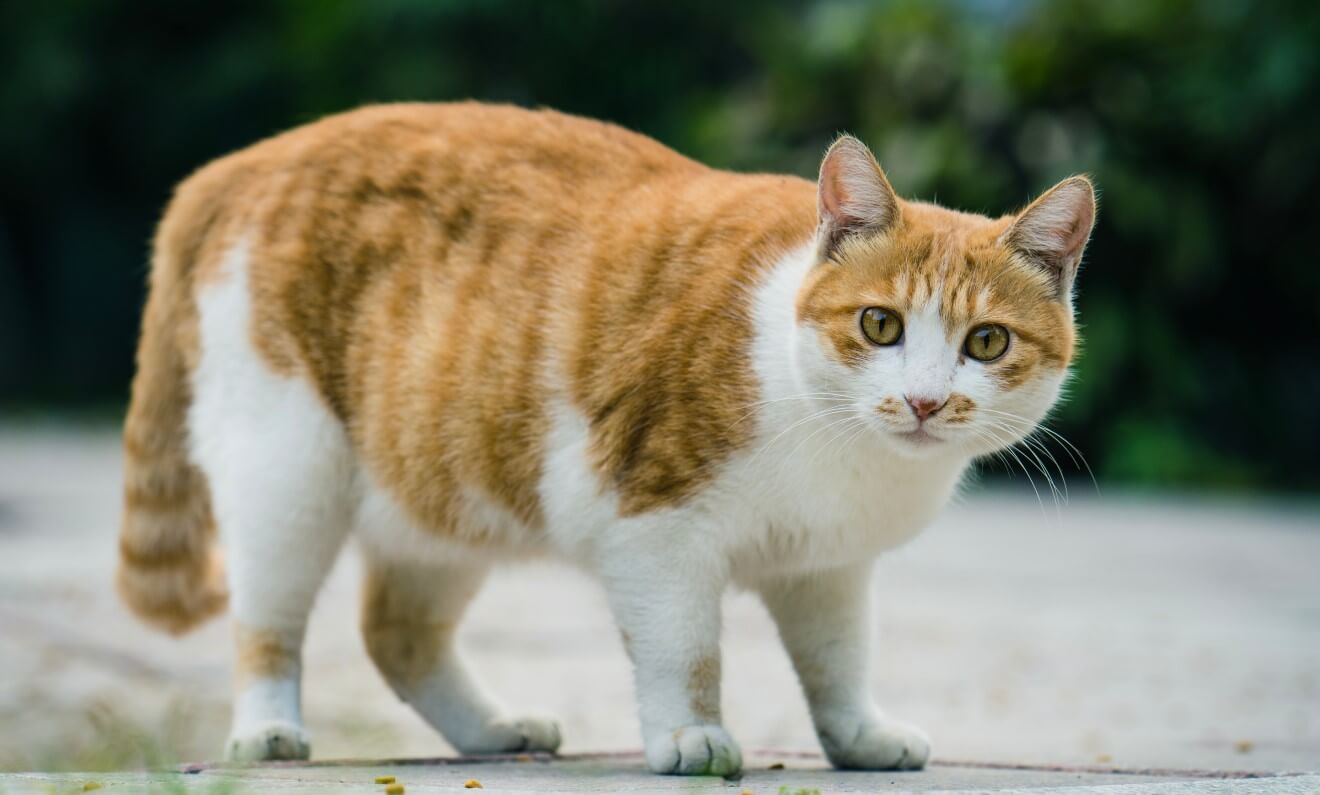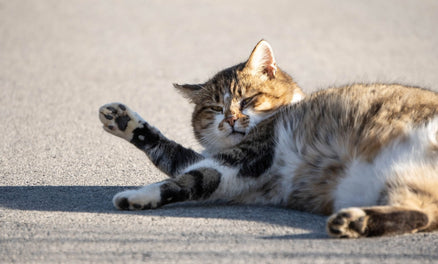by Alexander Thompson
May 04, 2022
4 minute read
TABLE OF CONTENTS
- How to Tell If Your Cat Is Overweight?
- What Are the Risks Linked to Obesity in Cats?
- How Do You Help Your Cat Shed Weight?
- How Long Should Your Cat Be on a Diet?
- In Conclusion
Wondering if obese cats exist and how common they are? Well, according to statistics, obese cats in North America constitute 30-35% of the entire cat population. The chances of a cat becoming overweight are higher if it spends most of its time indoors with little or no exercise.
Obesity, even in cats weighing two-three pounds, comes with less activity, joint pains, and skin conditions due to poor grooming. You will also not find that soft, silky coat in obese cats. Cats cannot maintain their weights by themselves - it is the role of the cat owners to help by ensuring adequate diet and exercise.
How to Tell If Your Cat Is Overweight?
The first sign of an overweight cat is in its figure, with changes based on the amount and quality of exercise and diet. Obese cats are at higher risk of skin problems, arthritis, diabetes, and other diseases. Another adverse effect of obesity manifests in the life quality and mobility of the affected cats.
You can know if your cat’s weight is healthy by measuring the rib coverage. It is a simple DIY method that effectively helps estimate your cat’s weight. Your cat can be too thin, slim, perfect, overweight, or obese based on the rib coverage measurement.
-
Too Thin
Cats in this category have little muscle mass. The ribs are visible alongside the shoulder blades, hip bones, and backbone. -
Slim
Slim cats have ribs and waistlines you can quickly see and feel. -
Perfect
Cats with the ideal weight also have ribs you can feel without pressing too hard. Just run your hands gently down their sides, and you feel the ribs. -
Overweight
Cats in this category have a sausage-like body. You will not see the waistline from a distance. The abdomen appears saggy if you are looking at the side view. -
Obese
Obese cats have ribs you can only feel by digging your hands down the fat. The abdomen appears clearly saggy from a distance.
What Are the Risks Linked to Obesity in Cats?
As mentioned earlier, obese cats are at higher risk of developing diseases that reduce both life quality and expectancy. Before now, fat is seen as a relatively inactive tissue that houses excess calories. However, recent scientific discoveries confirm that these fat tissues are biologically active, creating oxidative stress on other tissues of the body and secreting inflammatory hormones. Overall, they deplete the immune system of the cats.
Your cat’s health can move from 100 to 0 just by adding a few extra pounds. An obese cat is at the risk of:
- Heart diseases, diabetes mellitus, and different forms of cancer.
- Osteoarthritis and rapid degeneration of the joints involved.
- Urinary bladder stones.
- Decreased heat tolerance causing anesthetic complications.
How Do You Help Your Cat Shed Weight?
Having an overweight cat is not the end of the world. All you have to do is consult your vet for professional guidance on what to feed your cat to keep the perfect shape and weight. If you enjoy spoiling your cats with treats, you may need to cut down on the amount of normal good you give them.
Below are a few tips on how to help your cat shed weight:
Get Them to Exercise More
A cat that spends most time indoors may suffer from boredom and stress, with overheating in the long run. To avoid this, ensure you play with your cat daily and get them to exercise. For example, you can put some food inside their feeding ball to get some physical activity out of them before eating.
Crash diets or starving your cats are not advisable. Not giving your cat food for a period of time can cause serious problems. Instead, it is best to stick to a slow and consistent weight loss plan. For example, puzzle feeders can activate your cat’s hunting instincts and make them run around to get food. Feeders come in handy for weight loss programs - it encourages your cat to do some physical tasks and minimize the begging behavior.

Cut Down Your Cat’s Calorie Intake
Every food has a different caloric density, and it is based on this, that you determine the right amount of food for your cat. The number of calories a cat expend depends on the extent of exercise it does. We recommend using a measuring cup to estimate the correct feeding portions for your cat.
Diet cat foods consist of more fiber, fewer calories, and less fat. That said, all foods are created differently. Your vet will assess your cat’s dietary needs and prescribe the proper diet based on that. Your vet can also provide helpful exercise tips you can adopt for your indoor cats.
How Effective Are Weight Control Cat Foods?
Weight gain in cats occurs when your feline friends consume more calories than they use up. So, you can control weight by cutting down on the number of calories your cat consumes. Weight control cat foods often help to burn more calories by enhancing the cat’s metabolism.
However, cats may fail to lose weight despite eating weight control cat foods. That is why we recommend that you only use them as directed by a vet. Besides weight control cat foods, you can also consider weight control treats and similar cat supplies that keep your cat healthy.
How Long Should Your Cat Be on a Diet?
It takes about six to eight months for most cats to attain an ideal weight. In addition, losing one pound per month is a safe weight loss plan for cats. While some cats may go slower, others go faster and lose more pounds in shorter periods. The specific time often depends on the health conditions of the cat.
Weighing your cats regularly helps you keep track of their weight gain or loss and finetune their diets according to your goals. Work closely with your vet to create a healthy body weight gain or loss plan that works safely and correctly for your cat.
In Conclusion
Cats have no idea how excess weight affects their quality of life and overall wellbeing. That is why you must protect them from these harms as the cat owner by helping them maintain a perfect weight. It is the only way to help your cat live a long, healthy life. Obesity is common in cats, and it is a precursor to other health problems, including liver and heart diseases, diabetes, arthritis, and others. If you want to keep your cat’s life expectancy at the maximum, help it maintain a healthy weight.
SUBSCRIBE
Subscibe for our newsletter to get updates on the latest products, offers, and more.
CATEGORIES

























